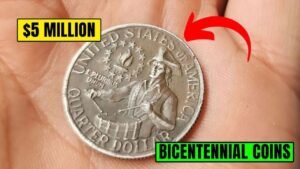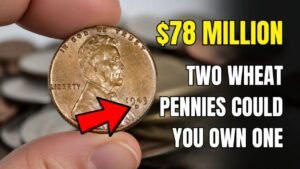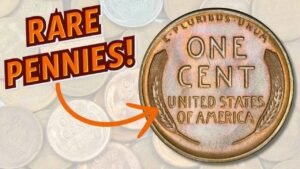Imagine casually flipping a penny from your pocket and realizing it could be worth millions—maybe even $120 million. It sounds like a story from a collector’s dream, but one rare Lincoln Wheat Penny has captured the attention of coin enthusiasts worldwide. Let’s explore what makes this tiny copper coin so legendary and how you could spot it if it crosses your path.
What Makes the Lincoln Wheat Penny So Special?
The Lincoln Wheat Penny was minted from 1909 to 1958, featuring Abraham Lincoln on the front and wheat stalks on the back. Most pennies are worth just a few cents, but certain rare variants, especially from 1943, are highly sought after.
The 1943 Copper Penny: A Collector’s Holy Grail
During World War II, the U.S. Mint switched from copper to steel pennies to conserve copper for military use. A few copper pennies accidentally slipped into production, creating an extremely rare 1943 copper penny. Only a handful are known to exist, and they can fetch millions at auction.
| Penny Type | Metal | Mintage | Approx. Value |
|---|---|---|---|
| 1943 Steel Cent | Steel | 1 billion+ | $0.10 – $1 |
| 1943 Copper Cent (Error) | Copper | <20 | Up to $120 million |
| 1943-D Copper Cent | Copper | Very Rare | $1.7 – $2 million |
| 1943-S Copper Cent | Copper | Ultra Rare | $1.5 – $2.5 million |
Why This Penny Is So Valuable
Several factors drive the staggering value of the 1943 copper penny:
- Rarity: Fewer than 20 examples are known worldwide.
- Historical significance: A wartime minting error makes it a piece of U.S. history.
- Collector demand: Numismatists are willing to pay astronomical sums for verified coins.
Even small variations or pristine conditions can dramatically increase the value.
How to Spot a Rare 1943 Copper Penny
You could unknowingly have a fortune in your pocket! Here’s a quick way to check:
- Check the year: Look for 1943 on the penny.
- Magnet test: Steel pennies stick; copper does not.
- Inspect mint marks: “D” for Denver, “S” for San Francisco.
- Weigh it: Copper ~3.11g; steel ~2.7g.
- Authenticate: Only coins certified by PCGS or NGC hold true million-dollar value.
Quick Tips for Protecting and Profiting
- Do not clean: Cleaning can destroy value.
- Handle carefully: Use cotton gloves and protective holders.
- Check old collections: Estate sales or coin jars may hide treasures.
- Join collector forums: Stay informed about trends and sales.
FAQs About the Rare Lincoln Penny
Q1: Could a $120 million penny still be in circulation?
A: It’s extremely rare, but yes—some have been found among loose change.
Q2: How do I avoid counterfeit pennies?
A: Use a magnet test and rely on professional grading services; fakes are often altered 1948 coins.
Q3: Are other Lincoln pennies valuable?
A: Yes—1909-S VDB, 1955 Doubled Die, and 1944 steel cents can also be worth thousands.
Q4: Should I sell if I find one?
A: Always authenticate first. A verified coin can reach top auction value.
Q5: How do I know the difference between steel and copper pennies?
A: Steel is magnetic and lighter, copper is brownish-red and non-magnetic.
Conclusion: Could Fortune Be in Your Pocket?
The 1943 copper Lincoln Wheat Penny is more than just change—it’s a slice of history and a potential fortune. While finding one is incredibly rare, knowing what to look for could turn pocket change into a collector’s dream. Next time you spot an old penny, don’t just toss it—inspect it. You might be holding a legend worth millions.




